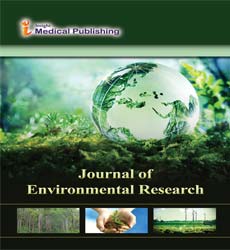Optimization and degradation of chloroxylenol by free and immobilized Klebsiella pneumoniae D2
Joint Event on 4th International Conference on Pollution Control & Sustainable Environment & 6th Edition of International Conference on Water Pollution & Sewage Management
July 26-27, 2018 Rome, Italy
Ghanem K M, El Ahwany A M D, Farag A M and Ghanem D A M
Alexandria University, Egypt National Institute of Oceanography and Fisheries, Egypt
Posters & Accepted Abstracts: J Environ Res
Abstract
Two samples from phenol contaminated soil and waste water were collected for the isolation of bacteria degrading chloroxylenol. Out of eleven isolates, isolate D2 was the most promising showing a degradation efficiency of 19.9%. The selected isolate was identified using 16S rDNA analysis as Klebsiella pneumoniae D2. Statistical designs were applied to optimize the medium composition and cultural conditions in favor of increasing the degradation efficiency of K. pneumoniae D2. The Plackett-Burman design was applied to determine the significant factors affecting chloroxylenol degradation. The degradation efficiency increased to 30.56%. Box-Behnken design was adopted to further investigate the mutual interactions between the variables and to identify their optimal values that would generate maximum chloroxylenol degradation. Under the optimized medium composition and culture conditions, K. pneumoniae D2 degraded 55.7% chloroxylenol after 24 hrs. Bacterial cells were adsorbed on different solid supports. The results showed that the degradation efficiency increased up to 88.3% on using 20 cubes of polyurethane foam. The degradation efficiency decreased by 10% on reusing adsorbed cells of K. pneumoniae D2 on polyurethane foam, upto 10 cycles. Immobilization accelerated the degradation. The time was reduced to nine hours reaching a degradation of 88.3% compared to free cells.
Google Scholar citation report
Citations : 65
Journal of Environmental Research received 65 citations as per Google Scholar report
Abstracted/Indexed in
- Google Scholar
- International Committee of Medical Journal Editors (ICMJE)
Open Access Journals
- Aquaculture & Veterinary Science
- Chemistry & Chemical Sciences
- Clinical Sciences
- Engineering
- General Science
- Genetics & Molecular Biology
- Health Care & Nursing
- Immunology & Microbiology
- Materials Science
- Mathematics & Physics
- Medical Sciences
- Neurology & Psychiatry
- Oncology & Cancer Science
- Pharmaceutical Sciences

